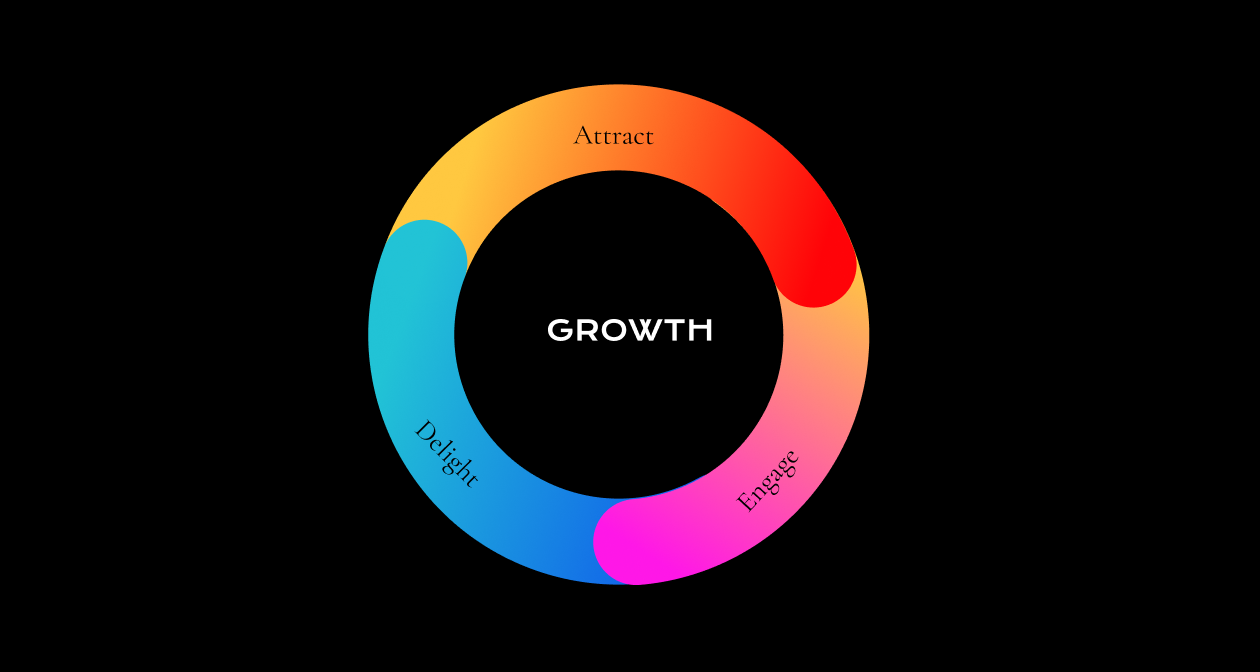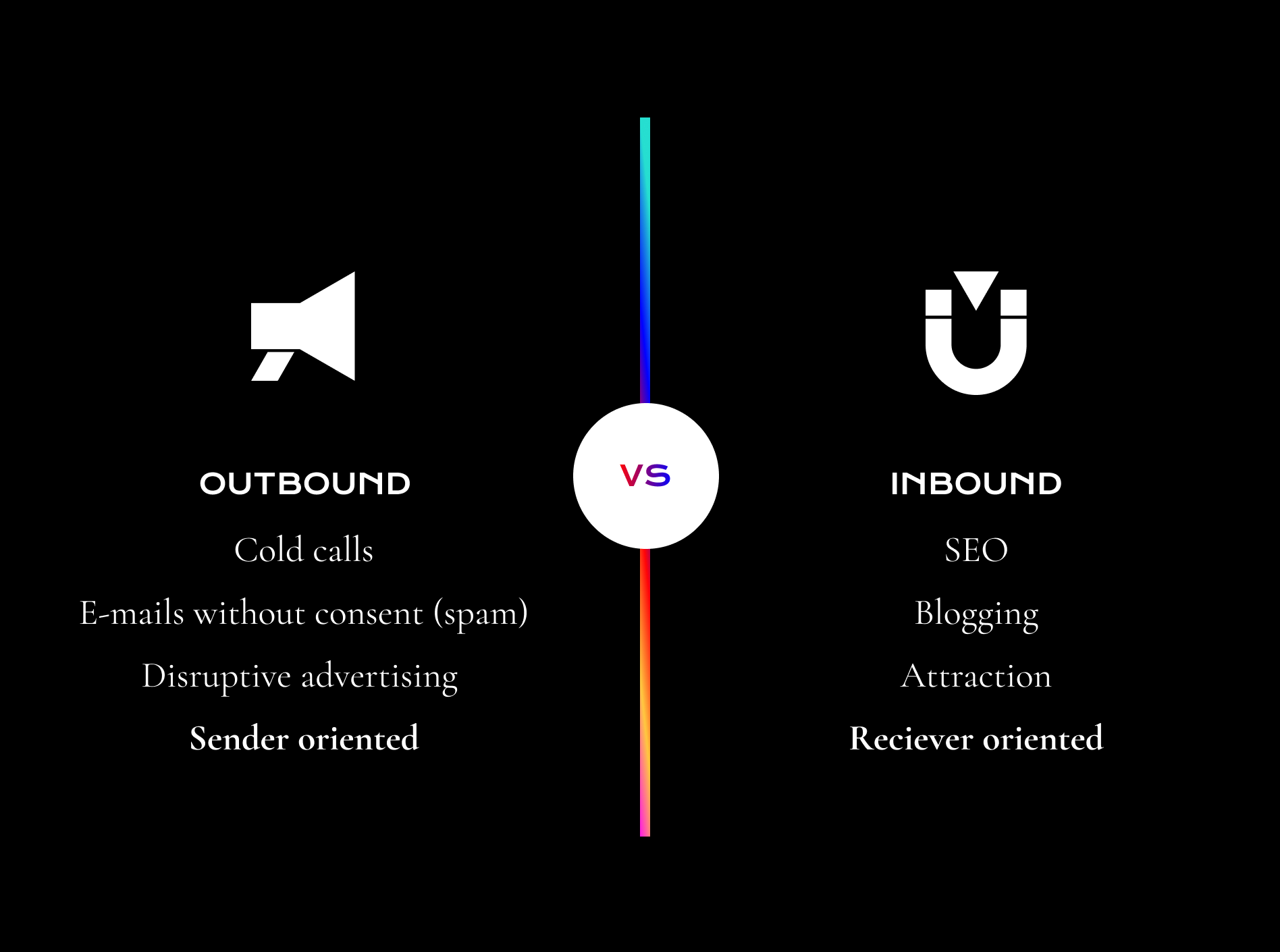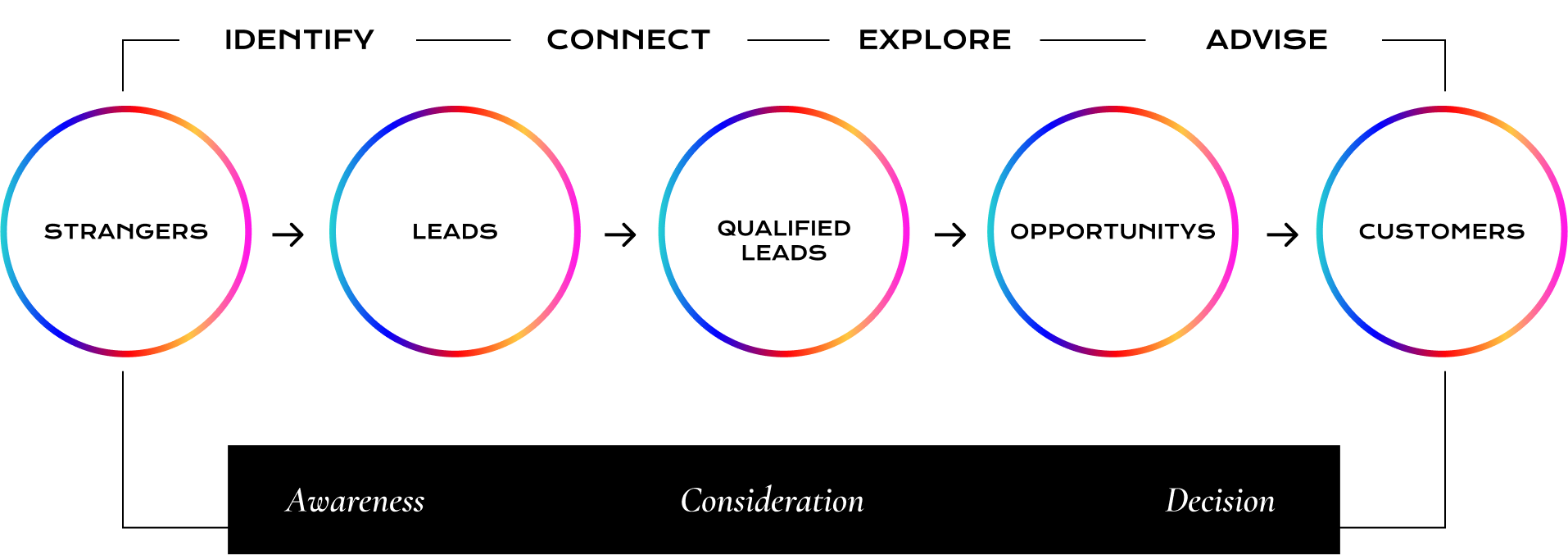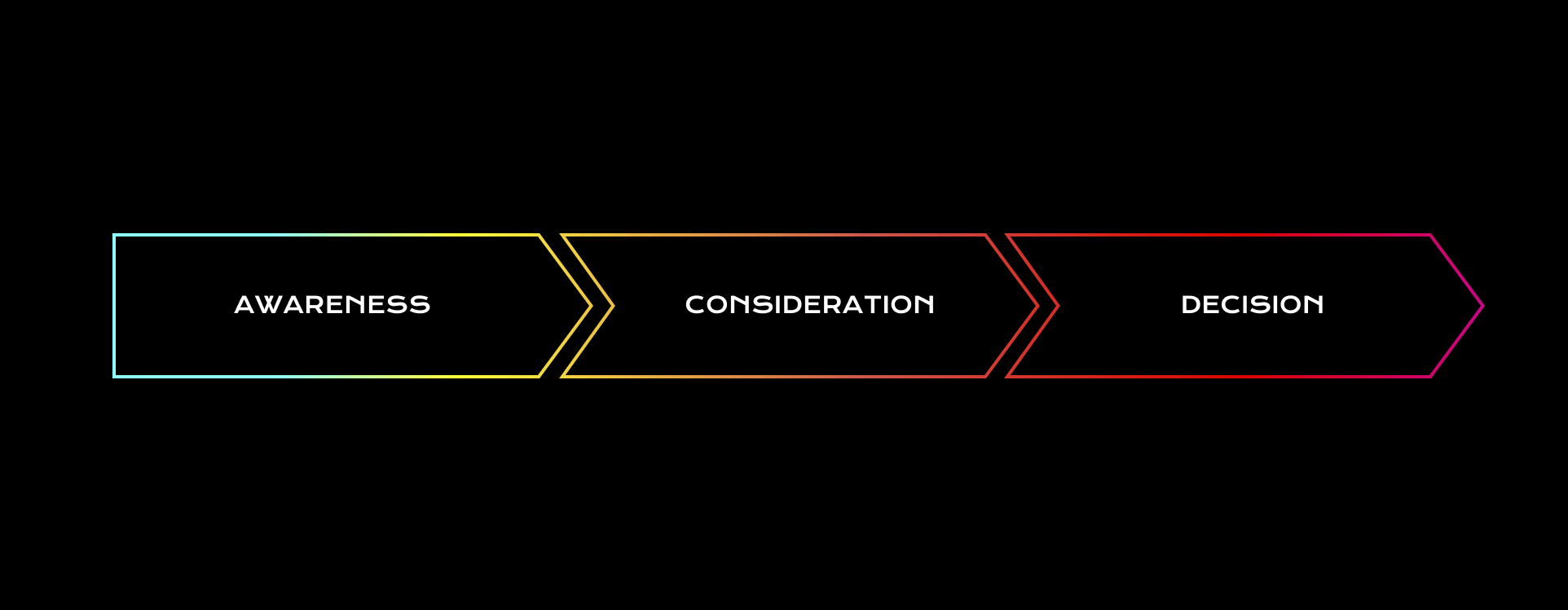Introduction
Welcome to our ultimate guide to inbound marketing and sales! You might be wondering “Why inbound marketing?” Because it works! We have seen it time and time again for companies in all types of industries.
Here you will be introduced to the inbound methodology and the ideas behind what is fast becoming the most popular marketing method for successful companies.
The guide will take you through the main aspects of the method, the tools you need and what resources are necessary.
At Avidly we are passionate about inbound marketing and sales, and we hope you will join us in the inbound movement. We hope you like it!
1. What is Inbound Marketing?
Inbound marketing evolved from the earlier permission-based marketing model. The first step is to start trying to identify your potential customers: the people you want to reach, what they do, how they typically behave online, and the concerns or challenges they might have related to your products or services, so that we can begin to understand the questions they are looking for answers to.
By creating content that answers their questions you can then help them make an informed purchasing decision. Try to think of your ideal customer as someone with a problem they need to solve. Your goal here is to provide them with the right information and help them understand why and how your services or products is the best solution to their problem. In short, inbound marketing is all about attracting customers through relevant and useful content, when they need it.
By using content in this way, potential customers will find you in the channels they use: blogs, social media and search engines.
The founder and earlier CEO of HubSpot, Brian Halligan was an early pioneer, coining the term “inbound marketing” himself. Take a quick look at HubSpot’s definition:
"Inbound marketing focuses on creating quality content that pulls people toward your company and product, where they naturally want to be. By aligning the content you publish with your customer’s interests, you naturally attract inbound traffic that you can then convert, close, and delight over time.”
The inbound marketing methodology
The inbound marketing methodology includes three steps: (ATTRACT, ENGAGE, DELIGHT)

At each step, inbound teaches us to provide leads with different type of information based on where they are in the buyer’s journey. And remember how we said inbound marketing was a holistic approach? Well, inbound also strongly emphasises communication with people after they become a customer.
By seeing the buyer’s journey as an open rather than closed loop, we can continue to delight our customers, encouraging them to make new purchases and upgrades when the time comes, and hopefully, recommend you to new customers. You can think of inbound marketing as taking advantage of a snowball effect – the more inbound traffic and leads you generate, the more your inbound strategies will grow.
Why inbound marketing?
There are lots of ideas and information out there about digital marketing and the best way to grow your business in the digital age of e-commerce, social media, SEO, paid search and many other strategies. So why should you go for inbound marketing? Quite simply, it works! But don’t just take our word for it.
A huge number of businesses and organizations around the world have embraced inbound marketing over the last ten years because they recognise it is a proven, long-term strategy for generating new leads and revenue for your business.
93% of all online interactions start with a search engine. (source: imforza.com)
Marketing automation in lead nurturing brings a 451% increase in qualified leads. (Business2Community, 2020)
89% of content marketers used blog posts in their content creation strategy in 2020. (Content Marketing Institute, 2020)
Why is it so effective? Well, inbound is not just a single strategy focused on individual elements of digital marketing with guarantees of what will work. Instead, it can be seen as a holistic methodology that combines all the various elements of digital marketing into one continuous process.
By combining marketing automation (software) with data (measurement and analysis) and creativity (content marketing), inbound marketing helps you go beyond guessing and discover what actually works for your customers.
Outbound VS. inbound marketing
Outbound marketing is what most companies are already doing in some form or another. It’s the most traditional way of communicating with potential customers through activities such as billboards, TV advertisements, print campaigns, email blasts to purchased lists and so on. It puts all the responsibility on a brand to go out and find its audience. However, getting your message out there in this way to as many as possible isn’t actually a very effective way of marketing for most companies when ROI is taken into consideration (the cost of getting a customer vs. the value of that customer to your company).

Additionally, with outbound activities, it’s often being more or less impossible to track the success of campaigns. What worked and what didn’t? There’s no way of really telling. With outbound marketing, those receiving the message have no say in how they receive it (or if they want it at all).
Traditional marketing treats customers as a single mass of people, with the same needs and interests – hearing about your company. That’s why people sometimes view marketing efforts as spam, why it can feel so invasive; why the tree fell but nobody heard the sound of it falling.
2. What are buyer personas?
A buyer persona is a semi-fictional representation of your ideal customer based on market research and real data about your existing customers. Your personas will encompass the typical needs, goals, worries, challenges and behaviour patterns of your real and potential customers.
"Using marketing personas make websites 2-5 times more effective and easier to use by targeted users"
HUBSPOT
In the end, knowing the companies buyer personas will make it easier to create blog posts, emails, website content or any other communication aimed at the persona. Having an actual image that instantly brings all the details to the front of your mind will save you time and make sure you stay on the right track.
To create them, pretend you’re writing a novel. You will need to get to know your main characters in-depth. As the author you need to know how these characters make their decisions, what they like and dislike, what motivates them, their goals and challenges.
Creating a detailed character outline before you start writing ensures you can wrap the story around them and have a best seller on your hands. You’re not excluding anyone. Although you are tailoring your communication towards a set of personas who you believe will convert, you’re not going out of your way to exclude anyone. What you do is focusing your efforts and energy where you will see a bigger return, since not absolutely everyone will be the right fit for your company.
Differencies between target audiences & buyer personas
A target audience is a broader demographic description of a large group of people. “Female, 25-35, Norway” or “Male, 18-25, student” are examples of target audiences. For years marketing using target audiences has failed to prove what effect it actually has. You may as well be standing at the top of a nearby mountain and shouting out your message hoping someone out there will hear you. You have no idea if these women or students are heading up the mountain or are actually climbing a mountain over in the next valley. Or if they even care about the message you’re screaming out.
If only one person out of every 10 in your target audience actually needs your solution, nine of them are not really leads to begin with. You have also wasted 90% of your allocated resources trying to communicate to the whole group. Personas are much more detailed and focus on the people you are trying to reach. You get to understand the three most important things: how they think why they think that way how you can really help them.

3. How to create buyer personas?
















It´s important to know how your personas react, what questions they have, what content they are looking for and what pain points they have at the different stages of the buyer’s journey.
When all the information about your persona is gathered, make sure you get an actual image of your persona. This is for internal use only, an image of a real person will make the persona feel more realistic. The image will also help everyone to recognise this persona as soon as they see the image.
We always recommend holding a workshop internally when creating buyer personas. Start by gathering people you know who have a lot of input on your client's behaviour. you don’t necessarily need to involve every person in the company, but you do have to make sure the right people are there. And eventually, the whole company needs to be familiar with your personas and how you want to communicate with them.
We suggest the following mix of people:
Someone from sales
Salespeople will know the pain points of both buyers and non-buyers and often know exactly why somebody buys from you or not.
Someone from support
Support often speaks frequently to people who are using your products and services. They are able to identify what questions people often have, as well as what your customers complain about.
Someone who has been in the company for a while
Do not underestimate people who have worked at your company for a long time. He or she probably knows if and how clients have changed over time.
Someone new at the company
In the same way, someone "old" is important, someone new is. This person can see things with new eyes and from another perspective.
You can also use other sources of information, including Databases, most read blog posts, most visited website pages, engaging social media posts and performance of ads. All this can give an indication of interest in certain topics. Also, make sure to use information and data about the customers you already have. Do you see any similarities between the information you get from the workshop and the exciting information?
Time for a workshop!
During the workshop, have the participants ‘wear’ the hat of the persona you are trying to describe and have everyone run through some of the following questions:
Role:
- What is your job title?
- What is your role?
- What does your typical day look like?
- Who do you report to? Who reports to you?
- How is your job measured (company KPIs)?
- What skills are required?
- Qualifications?
- What knowledge and tools do you use in your daily work?
Goals:
- What are you responsible for?
- What does it mean to be successful in your role?
Challenges and pain points:
- What are your biggest challenges?
- What are your biggest pain points?
Company:
- What industry or industries does your company work in?
- What is the size of your company (revenue, employees?)
Getting knowledge:
- How do you prefer to get new information for your job? (online, offline, network)
- What publications or blogs do you read?
- What associations and social networks do you belong to?
Purchase preferences:
- How do you prefer to interact with vendors (email, phone, social media, via chat, in person?)
- How do you search for information online?
- What types of websites do you use? (Google, companies' websites, forums, networking groups?)
Interview existing clients
Some of your existing clients are probably, or at least have a lot of similarities with the buyer personas you want to reach. Therefore it is also a good idea to interview a few of your existing clients. Here you have a great opportunity to get information about which pain points they had before you started your collaboration and what experiences they have with your company and communication.
4. The Buyer’s Journey
Before making a decision to buy, a potential customer will look for information about products or services related to their problem or needs. When working with inbound marketing the aim is to attract potential customers long before they might be ready to buy. And then guide them on their journey towards making that purchase. To do this successfully, you always have to be clear about what the next step is and show people how to get there.
The buyer’s journey is the road a lead takes from the first introduction to your company, often through content, to the final conversion to customer. When adapting content to fit the correct stage of the journey a prospect is currently at in their journey, you really need to understand the different stages prospects travel.
Awareness: The lead is experiencing a problem or a pain point they need to solve.
Consideration: The lead has defined their problem and is actively looking for a solution.
Decision: The lead is ready to choose the best provider.
The buyer’s journey starts as soon as the lead experiences a problem and they want to find a solution. To solve the issue they will often start by searching for solutions online. In this stage, the searches will often be general, but you still want to make sure that you are among the top results. With that said, SEO is very important!
As soon as a prospect recognizes what their problem is, they start to searching for content that presents different solutions, even if that means talking about competitors. Do not underestimate honest content, as long as it’s helpful to the reader you have succeeded in the consideration stage. Inbound marketing is a lot about being a guiding star!
Finally, you want to make sure you have content which explains why people should pick your company. This is maybe the content you are most familiar with and the type you have most of already on your website or blog. Do a content audit on your existing content and tweak it to your buyer personas. There is no reason to reinvent the wheel (create new content) again and again.
Here it can be really helpful to take inspiration from emails, presentations and other content shared by the sales team as well. They’re used to writing content everyday to convince prospects in the decision stage to choose your company.
5. What is the funnel?
“The funnel” is a term salespeople have been using for years that marketing should start considering as well as it ties in well with the buyer’s journey.
Before we look at mapping the buyer’s journey, let’s take a quick look at how the funnel relates to inbound marketing.
By using content you will guide the reader through their journey towards a purchase. The content will be tailored to each stage of the funnel in order to be helpful and relevant all the way:
TOP
The content should help people identify that they have a problem and what it is.
MIDDLE
The content here aims to help people find possible solutions.
BOTTOM
And lastly, the content at the bottom of the funnel should aim to help people understand that your company has the best solution or service to solve their problems.
Mapping the buyer’s journey
If your company hasn’t already done so, now is the time to map out the buyer’s journey from beginning to end. Again, this is best done in a workshop that gathers together everyone familiar with your customers and your buying process. Our suggestions for who should attend this workshop:
Someone from support and someone from sales, in the same way, these people should join the buyer persona workshop, they should also join the buyer’s journey workshop. These people talk to your customers every day and will know what they are concerned about.
Someone new to the company that can see things with fresh eyes
Someone who has been with the company a while that can speak from experience
In the workshop nothing should be held back, it is time to leave no stone unturned. Again, put yourselves in the mindset of the customer and imagine their experience from beginning to end.
- What problem might they have in order to start looking for solutions connected to your services or products?
- What thoughts are going through their mind?
Move systematically through the whole process, through closing and into delight. Look at how you take care of them every step of the way– or how you don’t. What content do you have answering their questions at every stage? After the workshop it is important to assign responsibility for fixing issues or producing content that is lacking.
6. Inbound blogging
Blogging is one of Google’s favourite sources of content because it tends to answer questions and provides useful information that people are looking for. If you are working in a B2B company and not yet have started a business blog, take a look at this statistics. The numbers speak pretty much for themselfs, right?
-
8 of 10 marketers publish blog posts to help reach their overall marketing goals (Oberlo 2020)
-
55 % of B2B marketers consider articles as the most successful type of content for moving possible clients through the sales funnel (Statista 2020)
-
Marketers that prioritise blogging are 13X more likely to see a positive ROI (HubSpot)
-
Blogs have been rated as the 5th most trustworthy source for gathering online information (Optinmonster 2021)
-
55 % of marketers believe that blogging is the most critical inbound marketing channel (Growthbadger 2021)
Notable here is that the numbers are fresh = a given proof that business blogging still works!
Without content to answers people’s questions throughout their buyer’s journey, you risk losing them before they even talk to a sales rep. Make sure that you have content that is a bit more general about the industry rather than just specific about your company and products. This helps to attract new visitors.
Review your content and make sure you have something for each stage of the buyer’s journey and presents different solutions to the reader. Through these pieces of content you will guide the lead towards a purchase, without nagging or being too pushy. This is the most important reason to format your blog posts with clear subheadings, bullet point lists and CTAs (call-to-actions). This ensures that you encourage even those skimming to take action based on the content.
One common question from clients who wants to start blogging is "How long should a blog post be?" The things is, the answer has varied a lot during the years and like many other things when it comes to Google and what they like, it depends. Although the average length of a blog post is 1,269 words, posts that have 3,000 or more generate the best results (Orbit Media, 2020). Other statistics from SemRush shows Blog posts that carry 7,000 words or longer have better SEO performance and get more shares. So, what are you waiting for?

Inbound Marketing and social media
At this point you might be thinking “so where does social media fit into all this?” You want to reach the right audience with your message. Whether you’re B2B or B2C, you should always use social media to distribute your content. Here you can directly reach people working in the industries, job roles and companies you want to get in touch with. Where do people invariably spend most of their online time? In general Facebook, Twitter, LinkedIn and Instagram. Platforms as Snapchat and TikTok is also getting bigger even for B2B marketing. These are perfect channels to reach potential customers with your helpful content.
Sharing and promoting the blog posts and landing pages with the right target audience can make social media one of your most important lead channels, particularly in the early days of your inbound marketing strategy. As time goes, organic traffic will grow, but until then, you need to put your content in front of people. As you get to know your personas, you can quickly identify which channels work for you. Some personas will spend their time on Facebook, others on LinkedIn. Maybe top of the funnel works better on Facebook, while LinkedIn is more effective as you move down the funnel. Some topics might get more attention in certain channels, while others grab people on Instagram. Or maybe the leads from one channel convert better to customers than from other channels.
7. What is Inbound Sales?
Once upon a time, marketing was all about the hard sell. Whether it was a cold call or an irritating email list, you’d be forgiven for mistaking selling for spamming. But then Inbound Marketing happened, and everybody’s life got that little less spammy.
Both marketers and consumers got to say goodbye to pushy sales, and hello to clever campaigns, subtle storytelling, and consumer-led social media strategies. In short, marketing became a bit more like a conversation, and we all fell in love. No surprise then that sales is beginning to follow suit.
Here we give you the lowdown on inbound sales – the objectives, the method, and the results.
At the click of a button
Take a moment to remember the pre-internet age (or just imagine it if you’re a millennial!). Back when Google wasn’t a thing, or a verb, how did people figure out how to spend their hard-earned cash? The answer’s simple: they turned to a salesperson – or rather, usually a salesperson attempted to approach them. These guys held all the cards. Using a technique known as legacy selling, these salespeople recycled the same elevator pitch to every customer, relying on the same old selling strategies, and were completely unaware of the buyer journey. But then the internet came along. Sales changed. Or more accurately how people purchased changed.
Now the customer’s in charge. At the click of a button they can find out everything they need to know about a product, and then buy it. No cold calls. No pushy salespeople. No fuss.
So how do you adapt to this new buying experience?
Say hello to Inbound Sales
Whether we’re talking about a huge corporation or a tiny business; a simple or a complex sales model, inbound sales makes sense.
Just take a look at its main philosophy:
From beginning to end, the entire sales strategy should focus on the buyer rather than the seller.
The experience should be personalised for the personal needs, points of pain, frustration and goals of the buyer. Makes sense, doesn’t it? By decoding the buyer’s actions and preferences using the inbound marketing process, the savvy salesperson can tailor their approach to their customer’s interests and needs.

Identify
Whereas legacy salespeople might use a scattergun approach to interacting with potential buyers, inbound sales is all about prioritising those buyers who are already active in a buying journey.
Connect
This is where creativity comes into play. To build trust with your customers you need to lead with tailored messaging, interact with buyers’ online conversations, and show off your expertise with honest advice.
Explore
When a buyer shows interest, don’t pounce. Instead, move into exploration mode. This means uncovering the buyer’s goals through an exploratory conversation.
Advise
Now you know more about your potential buyer, put that insight to good use. Tailor your presentation to the buyer’s context, making the most of information gathered during the Connect stage.
Identifying Leads
Let’s take a step back. Before you can put this game plan into action, you’ve first got to figure out your leads. That’s where buyer personas come in. In inbound sales, personas are everything.
Essentially, they help you pinpoint the job roles, concerns, skills and personality of your target audience. From there, all you have to do is flesh out these personas with digital profiles.
Generated using digital information from your website and content, these profiles offer insights into your prospects’ buying behaviour.
The result? A selling strategy that speaks directly to your customers.
"A strategic, cross-functional discipline designed to increase sales results and productivity by providing integrated content, training and coaching services for salespeople and front-line sales managers along the entire customer’s buying journey, powered by technology."
Sales Enablement
The goal of inbound sales enablement is to create a sales team that closes more deals. By using the proper tools, this should become easier and take less time than ever before. Inbound marketing will not work unless the marketing team and the sales team can see the world through the same lens.
After the sales team has a strong understanding of inbound sales, it’s time to look at how the methodology can best be used to enable better performance.
Sales process audit
The first step is to hold a workshop and carry out an audit to examine the company’s existing sales process.
- What do you do today?
- What materials or content do you use and how do your sales team typically close a sale?
- Where are your biggest lead sources?
- How much time and money do you spend on smaller value sales compared to larger opportunities?
It’s also extremely worthwhile to look for trends in leads you didn’t close. This audit is an in-depth, data-backed analysis of current sales mechanisms. Using an external agency for this can be hugely beneficial, as they can bring a fresh pair of eyes to the way things are being done offering an honest, unbiased sense of how you’re set up today.
Enablement content
It is not only the marketing department who produce useful content. Most salespeople do as well. But of course, every minute someone from sales spends producing content, is a minute not spent on selling. However, content with personal or customised elements is crucial towards the end of the inbound sales process. But what content is “sales content”?
Below are a few examples of different sorts of content but you can no doubt think of some more!
- Customer case studies
- Whitepapers
- Ebooks
- Product demo
- Pricing and discount information
- Checklists
- Proposal templates
Creating this content, as well as organising it, can greatly improve the sales team’s efficiency. The ultimate goal is to shorten the sales process. By investing time in great content templates now can save time during the hectic day-to-day sales process.
Case studies
Case studies are the most critical content for the sales team. This is a great way of having others present what they think you do well. HubSpot states that within six months of launching a new product, companies should aim to have at least one case study highlighting the product.
Case studies are effective because they clearly show your product or service solving a customer problem or challenge out in the real world for real customers just like your audience.
Creating email templates
HubSpot’s annual State of Inbound Sales report states that email is still the second most effective way for sales (only behind connecting via phone).
This is why salespeople should spend hours creating the best possible email copy. Taking the time to create standardised email templates that salespeople can access will dramatically improve productivity.
When creating these templates, keep in mind that not all prospects are the same. Leaving spaces for customization within every email template ensures a sales rep can personalize it with information relevant to the prospect time after time.
Additionally, using email templates makes it much easier to analyse and gain insight into the styles of email that work for your leads. What subjects lines work? Length, tone, images?
Reporting and analysing
Although you might be used to a data driven approach to selling, the constant stream of information at times can be overwhelming and possibly hurting productivity. This is why sales enablement focuses on systems to help make data your ally rather your enemy. It will be hugely beneficial for a company if the sales team can agree upon a standardized set of sales reports for everybody.
Here is some of the most commonly used include:
- Activities logged by salespeople
- Product demos delivered
- Deals won and lost
- Leads generated/worked
The point of these reports is to provide a quick overview of how the sales department is doing, and which areas need attention. To offer real value and help boost productivity not hinder it, running the reports shouldn’t be time consuming or include manual work. With the right tools the sales people only have to spend a few minutes logging each activity and management and team leaders can easily assemble the reports.
8. What is HubSpot?
There are a few different options for marketing automation software out there and HubSpot is one of them. There are also plenty of CMS (content management systems), email systems, analytics software, social media moderator tools etc. However, they are all in separate places, with different logins and, more often than not, they don’t speak to each other. We’ve all been there with our spreadsheets of passwords and logins, numerous “Request new password” every time you post something, and no way of telling which posts generated the most actual leads. And at the end of the day, no way of telling what works and what doesn’t.
Here is a few examples of the parts HubSpot exists and what you can do with them:
Sites
With HubSpot, you get a system that includes all the tools you need to do inbound marketing and sales. And so much more. Best of all, these tools are all connected, with data collected and passed across each process. When we say HubSpot is an all-in-one system, we mean it. Not only can you perform marketing activities here, but you can host your entire website in the system. This makes it incredibly easy to update all content, as well as connect the website to different campaigns and initiatives.
Many companies have websites that are impossible to update without talking to a developer. Or a CMS that doesn’t communicate with your CRM, blog, or systems for emails. Hosting your website in HubSpot will completely change your website experience. The pages are easy to edit, you can easily adapt the content based on what you know about the visitor through personalisation, and all leads activity is recorded on their contact card. How great wouldn’t it be to be able to go to a salesperson and say: “Take a look at this person! They have been to our website 10 times the last week, visited the “contact us” page, downloaded a report and read the following 3 blog posts. Can you call them and discuss what they need?”
The email tool lets you send emails to all the contacts you have in the database. But sending the exact same email to everyone is not very “inbound”. The email marketing tool makes it easy to segment your contacts, as well as gives you a detailed analysis of how emails performed: how many opened it, who clicked on links inside the email and so on. You’re able to use as many “smart” fields in the email as you would like. This function means for example, that if you know specific details about a contact, say their name and hometown. You can mark these bits of information or “fields” within the emails as smart fields. Doing this means HubSpot will automatically pull the relevant information from the database for every smart field you insert to personalise each email. So before you send the email, it might say “Hi FIRSTNAME! How’s the weather in HOMETOWN?”, but to the recipient, it will appear with their details in the appropriate place.
Marketing Automation
Doing everything manually will slow you and your team down. You will never have enough time to follow up with everyone who has downloaded a report, signed up for a newsletter and notify sales when a new lead has come in. Marketing automation will allow you to create processes to complete these actions— and more— automatically.
In HubSpot, it’s fast and simple to create workflows. You set the criteria, both for being enrolled in the workflow, as well as when and what they should receive. Let’s take an example: A person has downloaded a report from the website. 1 minute later they receive an email containing the report. 4 days pass. If the person is not already a subscriber to your newsletter, they receive an email encouraging them to sign up. If they already subscribe, they receive 2 relevant blog posts. 7 days pass. If they are not an existing client they are offered a free consultation. However, if they are a customer they are sent an overview of your latest product news. All this happens without anyone lifting a finger. You just set up the workflow once, and it will keep distributing relevant and useful content on your behalf.
One system to do it all
HubSpot is so much more than this though. Here you can create landing pages in your brand´s design to be able to convert visitors into leads. You can also analyse all your marketing activities such as views, time on page, bounce rate, view to submission rate and so on. Since HubSpot provide a lot of great features for both marketing and sales, we here share some more inspirational content about HubSpot:
Blog post: What is HubSpot?
Blog post: What is HubSpot CMS Starter Hub?
Webinar: TechTalk HubSpot Series - The Power of CMS Hub
Webinar TechTalk HubSpot Series - Operations Hub
Webinar TechTalk HubSpot Series - Marketing Hub
Webinar: TechTalk HubSpot Series - Sales Hub
8. What is the price for inbound and HubSpot?
How long is a piece of string?
There are two main costs associated with inbound marketing:
- Software
- Resources
HubSpot offers different packages to fit any company’s budget. As each package offers a large variety of options, we won’t cover the complete details of all three here, but give you some of the highlights:
Free version
Some companies might not have the marketing budget to purchase the full version of HubSpot. If you do not have the budget you can dip your toe in with their free version. We only recommend this as a trial version, not something companies should use permanently.
It includes:
A lead generation dashboard Lead flows (slide-in or pop-up CTAs and forms that can help you capture leads)
Collected forms
Contact database Lead insight (restricted to the first 7 days of website activity after lead is captured).
There is also a starter version of HubSpot, available at $50 a month. The main difference here is that there is no time limit on capturing lead insights, you get the option to create custom form fields, and you can remove HubSpot branding. * If you choose the free version, the system and all elements you use will have HubSpot branding.
Basic version
Basic A brilliant entry-level package for those new to inbound and not able to currently commit to the budget needed for a full version. You won’t have access to more advanced features such as workflows. This means you’ll be unable to implement all aspects of the inbound strategy. Most companies choosing basic upgrade to Pro as soon as they start converting their first customers through HubSpot and see the value. Price: $50/month
Pro
What we recommend for medium sized companies who do not have several sites or databases to manage. This version gives you access to all features, no HubSpot branding and allows you to set up workflows and other marketing automation activities. You will also have the option to carry out A/B testing of emails, CTAs and landing pages.
Price: $800/month
Enterprise
This is the best choice for any company with 10,000+ contacts and with more than one domain to manage. As well as making your marketing team extremely happy, you’ll get all elements from the Pro version, as well as revenue reporting, predictive lead scoring, contacts reporting, event-based segmentation etc.
Price: $2,400/month
For a full overview over HubSpots packages and prices, click here (add link).
Other expenses in inbound marketing
In addition to HubSpot, you will need content and resources to manage the strategy.
Content resources
If you don’t have the resources in-house to write content continuously, you might have to consider hiring someone or outsourcing this work to an agency or freelancers. It is important to highlight that most companies without a separate content department struggle to keep up with the amount of content that’s required for inbound success. It also takes time to find and manage freelancers.
SPONSORING CONTENT IN SOCIAL MEDIA
As previously mentioned it is wise to sponsor your content in relevant social media channels. This of course is something that you will need to set aside a budget for.

